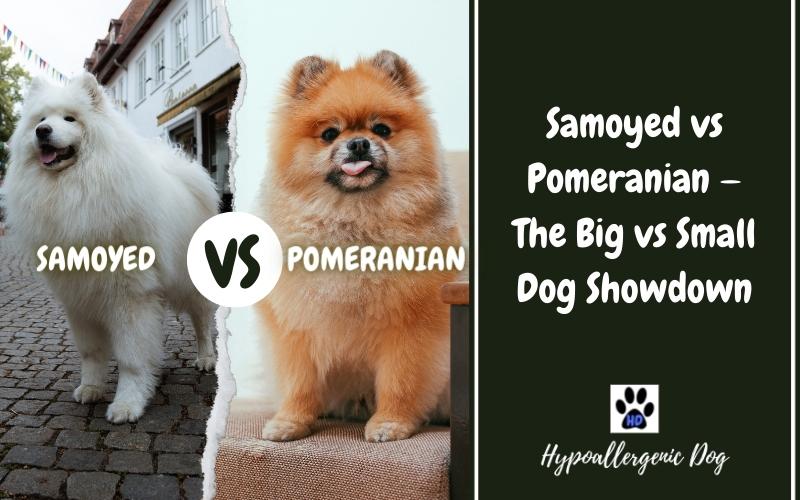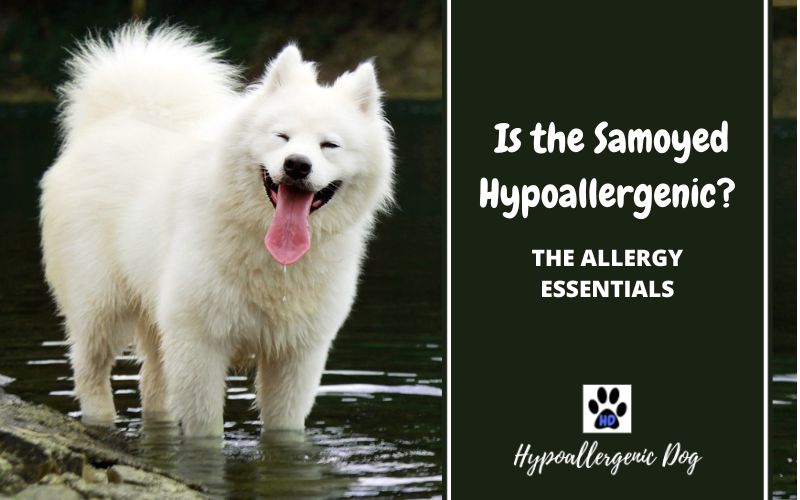If you’re thinking about getting an adorable dog, both the Samoyed and Pomeranian are popular choices. However, these tail-waggers are so cute that it can feel almost impossible to decide which breed is best for you.
Both share some similarities, they’re both very intelligent and easy to train — but no two breeds are ever the same. There are several key differences between the Samoyed vs Pomeranian that may help you choose the best fit for your circumstances.
Samoyed
Pomeranian
Personality
Energetic
Lively
Playful
Independent
Intelligent
Friendly
Sociable
Playful
Sociable
Fun
Energetic
Attentive
Stubborn
Smart
Family Dog
Yes
Not if you have young children
Height
19-23.5 inches
6-7 inches
Weight
35-65 pounds
3-7 pounds
Cost
$1200 - $1500
Average $1000
Hypoallergenic
Yes
No
Lifespan
12-14 years
12-16 years
Coat Colors
White, cream
White, black, tan, red, brown, orange, cream
Trainability
Moderate Trainability - can become distracted and bored without exciting and engaging methods
Easy to train but can be stubborn
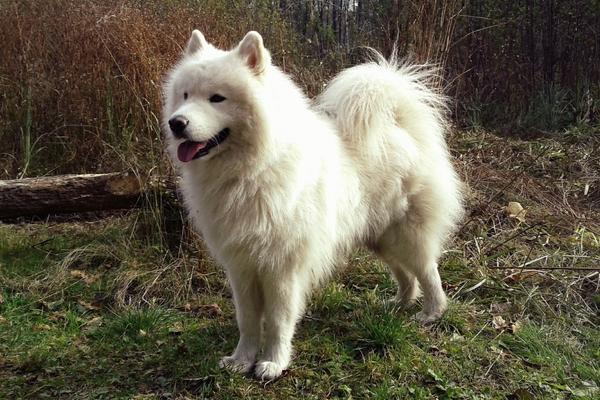
With an impressive white, fluffy, double coat, the Samoyed — often called the Sammie — is well adapted to living in a colder climate.
The breed’s roots are thought to stem from the Samoyede people, nomads from Siberia — hence the name. The Samoyed was originally bred to pull sleds across the unforgiving Siberian tundras, as well as for guarding, herding and hunting.
Samoyeds are full of energy but also have a gentle temperament. If you want your doggy to be well behaved at home, make sure they’re getting plenty of opportunities to exercise and play.
Sammies are the perfect pooch for lovers of the great outdoors. With their love of long walks, these dogs are the consummate companion for anyone who enjoys adventures in nature and hiking the trails.
This breed is a family dog, their high intelligence can make training a fairly easy process. However, the Samoyed needs plenty of socialization and playtime, otherwise, they can become bored and destructive.
Samoyed Pros
- Highly intelligent.
- Good family dogs.
- Hypoallergenic coat.
Samoyed Cons
- Can misbehave when bored.
- Needs around 2 hours of exercise a day.
- Seasonally sheds a lot.
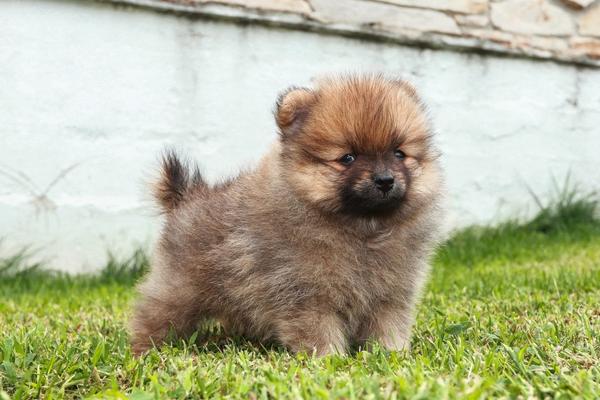
Pomeranian
The Pomeranian dog breed — aka the Pom — originates in the Pomerania region of Germany and Poland. While a tiny toy dog, they descend from the German Spitz, a much larger breed.
Before the Pomeranian was bred into the small breed we all know and love today, the dogs would grow to weigh around 30 pounds — their job was to pull sleds, hunt, and protect livestock. Poms were downsized over the years, and now their only responsibility is to look cute and keep their owner company.
Pomeranians may be small, but they’re full of energy and are lively little pups. They will keep you entertained for hours on end. Their adorable appearance and fun personality have been a favorite amongst royalty over the years.
Is the Pomeranian for Me?
Pomeranians are very small and can potentially become injured during playtime with small children. Hence, it’s best to hold off becoming a Pomeranian parent until your children understand how to be gentle and play safely with their furry friend.
However, Poms are fun and lively little dogs and can make a great addition to families with older children. These dogs are also well suited to busy people who don’t have several hours free in their day for dog walks.
The small size of the Pomeranian makes them a great choice for people living in small apartments. They can even be trained to use an indoor puppy toilet if you don’t have a garden and need to leave them alone. However, Poms can suffer from separation anxiety and may be destructive when left for several hours at a time.
Pomeranian Pros
- Only need around half an hour of exercise a day.
- Fun and playful companion.
- Small enough for apartment living.
Pomeranian Cons
- Can be stubborn at times.
- Might be unfriendly towards strangers.
- Not suitable for households with young children.
Samoyed vs Pomeranian Size
When it comes to size, a full grown Samoyed vs Pomeranian couldn’t be more different.
- An adult Samoyed can grow to around 23.5 inches for males and 21 inches for females. This breed weighs up to 65 pounds and is classified as medium-sized.
- Pomeranians fall into the toy group — they’re tiny — only weighing approximately 7 pounds and growing to 7 inches tall.
If you want a larger dog, the Samoyed is the breed of choice. However, if you know you only have room for a small dog in your home, the Pomeranian is the clear winner.
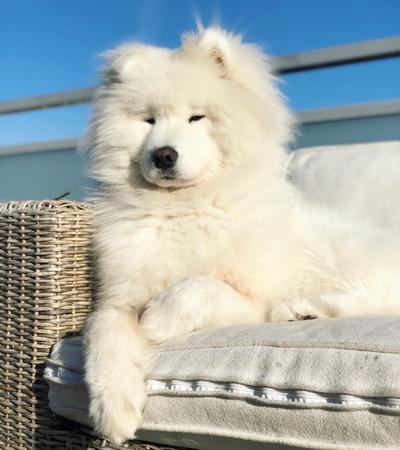
Samoyed vs Pomeranian Temperament
While the Samoyed and Pomeranian were originally bred for similar purposes. As for their temperament, there are some key differences between the two breeds to keep in mind.
Pomeranian
Pomeranians are small dogs with big attitudes! This breed is known to be quite stubborn and even aggressive at times. They may have been bred to be smaller over the years, but this breed still has the personality of a big guard dog and will bark and become territorial over their home.
That said, Poms do make wonderful pets. They’re full of spirit, and their outgoing and lively character makes them fun dogs to have around the house.
Samoyed
Samoyed dogs are known to be a little more relaxed and gentle than the Pomeranian. These bow-wows do have a lot of energy, but they’re also more independent and not known to bark or become as aggressive as their tiny furry peers.
Don’t get a Sammie if you plan to leave it alone most of the time. This breed may have an independent side, but they are pack animals and need lots of socialization and mental stimulation.
Samoyed vs Pomeranian Training
When training any dog breed, patience and consistency is always the key to success. Both the Pomeranian and Samoyed were originally bred in a pack, and their instincts tell them they must answer to the alpha.
Samoyed
Samoyeds are eager to please and will want to make their owners happy. Use positive reinforcement and enthusiasm during training. Remember, this breed is very intelligent with an independent streak, so you will need to keep training engaging and exciting.
These dogs are not designed to be solitary creatures, and if left alone for long periods of time they can easily get themselves into trouble — destroying your home in the process.
Pomeranian
As for the Pomeranian, this breed can be a little more stubborn and tricky to house train. However, if you get your Pom’s respect early and quickly establish yourself as number one, training shouldn’t be too difficult.
It may be challenging to deal with your Pomeranian’s stubborn side, but remaining calm is essential. Shouting at a Pomeranian will only scare them and won’t encourage them to obey your commands. With an engaging and consistent training method, even first-time dog owners can train a Pomeranian successfully.
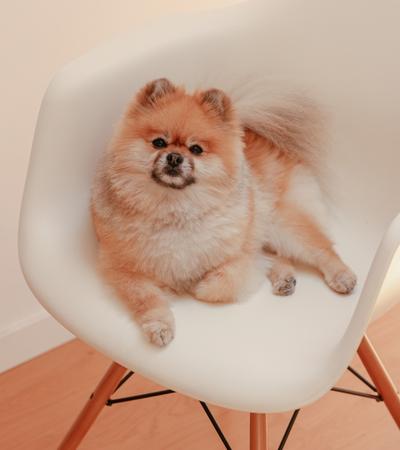
Samoyed vs Pomeranian Price
The price tag of these two breeds can vary dramatically between breeders, and puppies from certain bloodlines can be considerably more expensive. On average, a Samoyed puppy can cost anywhere between $1200 and $1500 and the Pomeranian price can average $1000.
These prices are average estimates, the only way to know for sure is to research breeders and compare the prices. The Samoyed is considered to be one of the most expensive dog breeds in the world, and puppies from certain bloodlines have been sold for more than $10,000.
Samoyed vs Pomeranian Shedding
This point is important for people with dog allergies. Allergy symptoms are caused by proteins found in a canine’s urine, drool, or when a dog sheds dander (dead skin cells). This occurs more frequently in breeds that lose their fur regularly.
Samoyed
The Samoyed is a hypoallergenic dog, thus suitable for people sensitive to dog dander.
Sammies have a long double coat with a soft and fluffy appearance and are heavy shedders. While this breed sheds fur all year round and goes through large seasonal coat blowouts twice a year, they don’t produce much dander. While the Samoyed may cover your home in white fluff, they don’t shed enough dander to trigger your allergy symptoms.
What’s more, the Sammie’s jaw is in a permanent smiling shape, this prevents any drooling and is also good news for people with allergies. This evolutionary trait deterred drool icicles forming during sled pulling through snowy Siberia.
Pomeranian
In comparison, Pomeranians aren’t hypoallergenic. This breed also has a long double coat, but they release more dander when they shed, which can be problematic for allergy sufferers. Pomeranians shed moderately throughout the year and experience full coat blowouts during the change of seasons.
The long and soft outer coat may look totally adorable, but the hair shedding from the undercoat can cause unpleasant allergy symptoms such as sneezing, hives, and sore eyes.
Samoyed vs Pomeranian Grooming Needs
Both Pomeranians and Samoyeds make ideal show dogs, and their grooming needs will depend on this. If you want to show your dog, you will need a stricter grooming schedule to keep your pooch looking their best.
However, if it’s purely companionship you’re after, you can be a little more relaxed when it comes to getting their haircut and style.
Brushing
The Pom requires a good brush once a week with a pin brush and a slicker brush to prevent any knots and matting in their long coat.
Samoyeds need to be brushed daily to remove loose hair and dirt. Any mats can be addressed with either a metal comb or a slicker brush. All of this grooming will help to keep their coats in tip-top condition.
Bathing
It’s also advisable to bath your Pom around once a week to keep them smelling clean and to get rid of any dirt they’ve picked up on their legs or underside.
The Samoyed will only need to be bathed and shampooed around once a month, or as necessary — if and when they’re dirty. However, the white coat of a Samoyed will show up dirt and mud easily. If you want it to remain pristine, you will need to clean it with doggy shampoo.
Nails and Teeth
As well as taking care of their coats, both breeds need their nails trimmed regularly. It’s also recommended that all dog owners attempt to brush their dog’s teeth around two or 3 times a week.
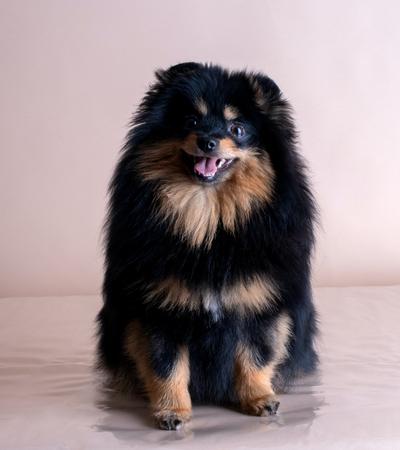
Samoyed vs Pomeranian Exercise
As we’ve discussed, both the Pomeranian and Samoyed were bred to tow sleds and still possess all of that energy in their genetic makeup today. However, Pomeranians have shrunk considerably over the years and while they may still have the energy of their ancestors, their tiny legs can’t walk as far!
Pomeranian
An adult Pomeranian will need around 20 to 40 minutes of exercise a day. Most owners choose to split their Pom’s exercise time into two shorter walks. You should walk at a quick pace for your Pom so they can adequately burn off their built-up energy.
Samoyed
Samoyeds, on the other hand, need a lot of daily exercise. Don’t take on a Samoyed if you don’t like walking — this breed needs around 2 hours of exercise every single day.
These tail-waggers were developed to run miles. Hence, owners need to find ways to help their dog meet exercise needs deep-rooted in their breeding.
Both Pomeranians and Samoyeds will begin to display bad behavior if they aren’t getting the exercise they require. To make sure your pooch is relaxed and happy at home, remember to walk them daily and provide them with lots of opportunities to play and socialize.
Conclusion
The Samoyed and Pomeranian are two very different breeds to look at. However, while the Pom is much smaller, it shares the same big energy and fun-loving attitude as the Sammie. Both breeds descend from working hounds, and remain bundles of playful energy today.
So, if you’ve been thinking about Samoyed vs Pomeranian — whether you have allergies could be the deciding factor.
Are Samoyeds High Maintenance?
Yes, when it comes to exercise, Samoyeds are a high-maintenance breed. These dogs need around 2 hours of daily exercise, plus plenty of attention and socialization. They also need their coat brushed every day and bathed around once a month, this will help to keep their white coat in good condition.
Is Samoyed An Intelligent Dog?
Yes, Samoyeds are highly-intelligent dogs. They’re pack animals and will learn and obey commands from their alpha quickly. However, it can also mean they become bored quite easily, so it’s important to provide plenty of opportunities for mental stimulation and play.
Does Pomeranian Bark a Lot?
Pomeranians are known to be frequent barkers. This breed can be very territorial and can become suspicious of people they don’t know. Poms can bark aggressively and display other unpleasant behaviors when they switch into guard dog mode!
Do Pomeranian Dogs Shed?
Yes, Pomeranians shed moderately all year round. This breed will also experience seasonal blowouts — where they shed large amounts of fur — which is then replaced with their winter or summer coat.
Why Is the Samoyed Considered Hypoallergenic?
Samoyeds are heavy shedders but are hypoallergenic. This breed will not trigger allergy symptoms because they don’t produce much dander — the dead skin cells that carry the allergen protein. Samoyeds also don’t drool — the allergy protein can also be found in a dog’s saliva.
What Is the Difference Between Pomeranian and Samoyed?
There are a few key differences between these breeds, such as:
- Height — Samoyed is larger compared to the Pomeranian.
- Weight — Sammie weighs more than the Pom.
- Hypoallergenic — Pomeranian isn’t allergy-friendly, but the Samoyed is a low-dander-producing dog.

